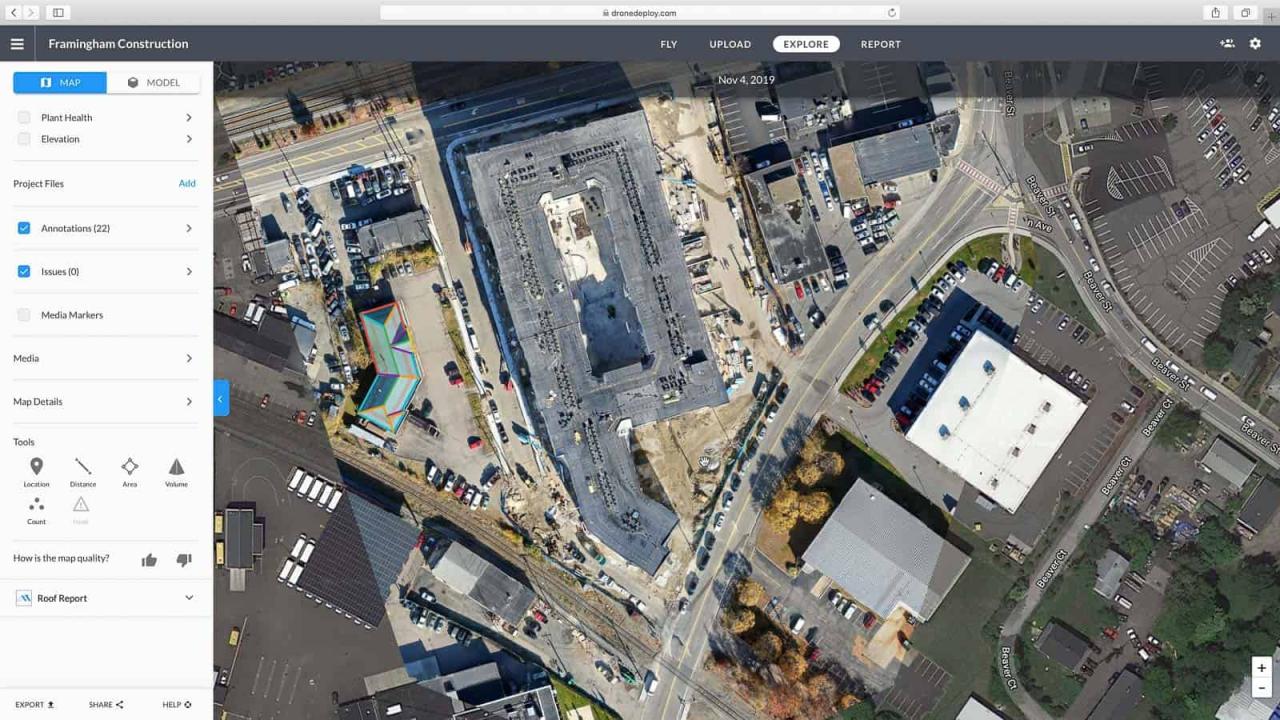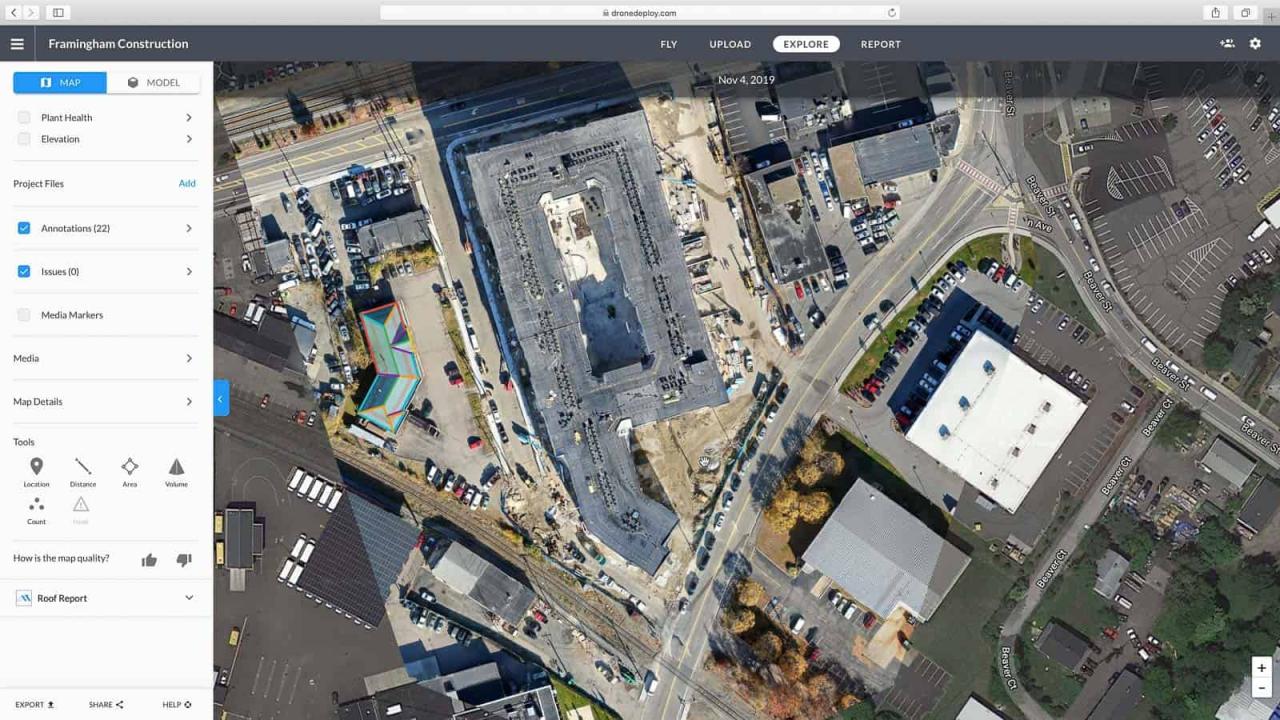How to use drone deploy – How to Use DroneDeploy: Unlocking the power of aerial imagery is easier than you think! This guide walks you through setting up your account, planning flights, integrating your drone, processing data, and exploring advanced features. We’ll cover everything from basic navigation to sophisticated data analysis, making drone surveying accessible to everyone.
Get ready to take flight! We’ll cover creating accounts, planning missions, connecting your drone, processing your data, and even using advanced features. By the end, you’ll be confidently capturing and analyzing aerial data like a pro.
Getting Started with DroneDeploy

DroneDeploy is a powerful cloud-based platform for planning, flying, and processing drone data. This guide provides a comprehensive walkthrough of the platform, from account setup to advanced features. We’ll cover everything you need to know to get started and leverage DroneDeploy’s capabilities for your projects.
DroneDeploy Account Setup and Navigation

Setting up your DroneDeploy account is straightforward. Begin by visiting the DroneDeploy website and clicking the “Sign Up” button. You’ll need to provide basic information like your name, email address, and create a password. After verification, you’ll be able to access the DroneDeploy dashboard.
Getting started with DroneDeploy is easier than you think! First, you’ll want to set up your account and connect your drone. Then, check out this awesome guide on how to use DroneDeploy for a step-by-step walkthrough. Once you’ve grasped the basics, you’ll be creating stunning aerial maps and data in no time. Mastering how to use DroneDeploy opens up a world of possibilities!
The DroneDeploy interface is intuitive and user-friendly. The main dashboard displays your recent projects, allows quick access to flight planning, data processing, and team collaboration tools. Key sections include the “Projects” tab for managing your projects, the “Flights” tab for reviewing flight logs, and the “Settings” tab for managing your account preferences and billing information.
Navigating the dashboard is simple. Use the intuitive menu structure and search functionality to find specific tools and settings. Each section is clearly labeled, and tooltips provide additional information as needed.
| Plan | Price | Features | Suitable For |
|---|---|---|---|
| Basic | $0 | Limited flights, basic processing | Individuals, small projects |
| Plus | $[Price Varies] | Increased flight capacity, advanced processing options | Growing businesses, larger projects |
| Enterprise | $[Price Varies] | Unlimited flights, priority support, custom features | Large organizations, complex projects |
Flight Planning and Mission Setup

Creating a flight plan in DroneDeploy involves defining key parameters like the area to be mapped, altitude, speed, camera settings (overlap, sidelap), and the desired mapping mode (orthomosaic, 3D model, point cloud). DroneDeploy offers automated flight planning tools to simplify this process. You can import shapefiles or manually draw the area of interest on the map.
DroneDeploy supports various mapping modes, each optimized for different applications. Orthomosaics provide a seamless, georeferenced image of the area, while 3D models offer a three-dimensional representation of the terrain. Choosing the appropriate mode depends on your project’s specific needs.
Optimizing flight plans involves ensuring sufficient overlap and sidelap between images to enable accurate stitching during processing. Higher overlap generally leads to better results but increases flight time. Adjusting altitude and speed can also affect data quality and flight time.
A sample flight plan for inspecting a construction site might involve setting a low altitude for detailed imagery, focusing on specific areas of interest, and selecting an orthomosaic mapping mode for precise measurements and progress tracking.
Drone Integration and Flight Execution
Connecting your drone to DroneDeploy typically involves downloading the DroneDeploy mobile app and following the in-app instructions. The app will guide you through the pairing process with your drone, verifying compatibility and ensuring proper communication.
Once connected, executing a pre-planned flight mission involves launching the app, selecting your flight plan, and initiating the takeoff sequence from your drone’s controller. DroneDeploy’s app provides real-time flight monitoring and feedback, allowing you to track progress and address any potential issues.
Common issues during flight execution might include connectivity problems, low battery levels, or unexpected weather conditions. Troubleshooting tips often involve checking drone battery levels, ensuring a strong cellular or Wi-Fi connection, and postponing flights in adverse weather.
- DJI Phantom 4 RTK: High-precision mapping, suitable for surveying and mapping applications.
- DJI Matrice 300 RTK: Robust platform for industrial applications, capable of carrying multiple payloads.
- Autel EVO II Series: Versatile drones offering good image quality and flight time.
Data Processing and Analysis
DroneDeploy automatically processes the imagery captured during the flight. This includes image stitching, orthomosaic creation, and optional 3D model generation. The processing time varies depending on the size of the project and the selected processing options.
Interpreting and analyzing the processed data involves examining the orthomosaic for anomalies, measuring distances and areas using the built-in measurement tools, and extracting insights from the 3D model (if generated). Data can be used to identify potential issues, monitor progress, or create accurate as-built documentation.
Processing errors can manifest as gaps or misalignments in the orthomosaic or inaccuracies in the 3D model. Resolving these errors often involves reviewing the flight logs, re-flying problematic areas, or adjusting processing parameters.
Processed data can be exported in various formats, including GeoTIFF for geospatial applications, KML for integration with GIS software, and PDF for sharing with stakeholders.
Advanced Features and Applications, How to use drone deploy
DroneDeploy offers advanced features such as progress tracking, enabling monitoring of project progress over time through the comparison of multiple datasets. Measurement tools allow precise measurement of distances, areas, and volumes directly on the processed data. Collaboration features enable multiple users to work on the same project simultaneously.
DroneDeploy finds applications across various industries. In construction, it’s used for site monitoring, progress tracking, and volume calculations. In agriculture, it aids in crop monitoring, yield estimation, and irrigation management. Mining applications include site surveying, stockpile volume measurement, and safety inspections.
Compared to other drone mapping software, DroneDeploy stands out with its user-friendly interface, automated processing capabilities, and robust collaboration features. However, specific feature sets and pricing may vary depending on the software.
Imagine a 3D model of a construction site generated from DroneDeploy data. This model would accurately represent the site’s topography, buildings, and infrastructure. Key features would include precise measurements of building heights, volumes of excavated material, and the overall site layout. The model would be generated using DroneDeploy’s automated processing pipeline, utilizing photogrammetry techniques to stitch together the individual images captured during the drone flight and creating a textured 3D mesh.
Sharing and Collaboration
Sharing processed data and reports in DroneDeploy can be done through various methods, including generating shareable links, exporting data in common formats, or inviting collaborators to the project. The platform provides granular control over access permissions, ensuring data security and confidentiality.
Teamwork and collaboration are supported through features like shared project access, simultaneous editing capabilities, and integrated communication tools. Multiple users can contribute to the same project, streamlining workflows and improving efficiency.
Best practices for managing collaborative projects involve establishing clear roles and responsibilities, using a consistent naming convention for files and folders, and regular communication among team members.
Getting started with drone mapping? Learning how to use DroneDeploy is easier than you think! First, you’ll want to set up your account and connect your drone. Then, check out this awesome tutorial on how to use DroneDeploy to master flight planning and data processing. Finally, you’ll be analyzing your stunning aerial imagery in no time – it’s that straightforward!
A collaborative workflow might involve a drone pilot responsible for capturing the imagery, a data processor responsible for processing the data in DroneDeploy, and a project manager responsible for overseeing the project and communicating with stakeholders. Each team member would have specific access permissions within the DroneDeploy project, ensuring efficient and secure collaboration.
Mastering DroneDeploy opens up a world of possibilities, from construction site inspections to precision agriculture. By following this guide, you’ve equipped yourself with the skills to leverage this powerful platform for efficient data collection and analysis. Now go out there and start mapping!
Questions and Answers: How To Use Drone Deploy
Can I use DroneDeploy with any drone?
No, DroneDeploy is compatible with a selection of drones. Check their compatibility list for supported models.
How much does DroneDeploy cost?
DroneDeploy offers various subscription plans with different features and pricing. Check their website for the latest pricing information.
What file formats can I export my data in?
DroneDeploy allows you to export data in several formats, including GeoTIFF, KML, and PDF, among others.
What kind of support does DroneDeploy offer?
DroneDeploy provides documentation, tutorials, and customer support resources to assist users.
Is there a free trial available?
Check the DroneDeploy website for details on free trials or introductory offers.
